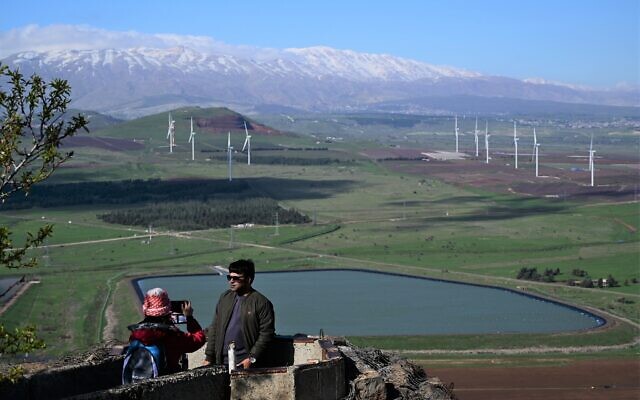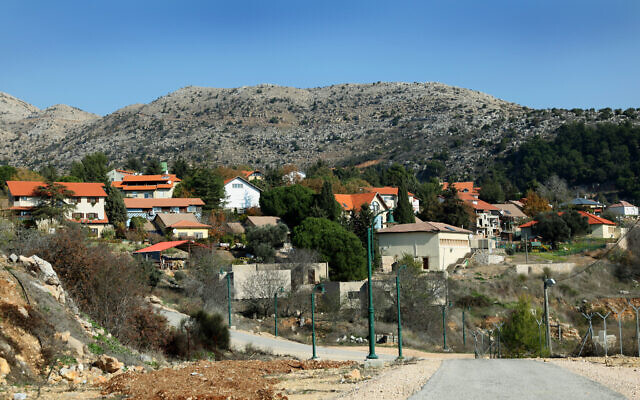Cabinet meeting to be held in Kibbutz Mevo Hama; moves aim to upgrade infrastructure, establish new locales, create jobs; PM wants to double population to 100,000

Government ministers are to hold their weekly cabinet meeting on Sunday in a kibbutz in the Golan Heights, where they will approve a NIS 1 billion ($317 million) development plan aimed at encouraging demographic growth in the strategic area in the coming years.
The plan’s goal, formulated by a team headed by the Prime Minister’s Office director-general, Yair Pines, is to boost the population in the Golan Regional Council and the Katzrin Local Council between 2022-2025.
Prime Minister Naftali Bennett announced the plan in October, saying that the ultimate goal was to reach 100,000 residents in the coming years.
Currently, some 53,000 live in the Golan Heights: 27,000 Jews, 24,000 Druze, and some 2,000 Alawites (an ethnoreligious group originating from Shia Islam and a minority sect to which Syria’s ruling family, the Assads, belong).
Describing the Golan as a “strategic goal,” Bennett said the aim was “to double, and then double again the number of residents on the Golan Heights.”
Sunday’s meeting will be held in Mevo Hama in the Golan Heights. For the first time since the start of the pandemic, all attending ministers will be required to take a rapid COVID-19 antigen test before entering the cabinet meeting.
The government plan aims to upgrade infrastructure, establish new communities and neighborhoods, and create 2,000 new jobs by turning the region into “the capital of Israel’s renewable energy technologies,” the Kan public broadcaster reported.
The proposal involves a number of agricultural technology projects, according to the report, including agro-voltaic projects where PV (photovoltaic) panels, also known as solar panels, are mounted over crop fields to facilitate crop growth and generate electricity at the same time.
Some NIS 576 million ($183 million) will be allocated for housing planning: about 3,300 new housing units in Katzrin and another 4,000 in the Golan Regional Council, within five years.

Two new locales — Asif and Matar — are to be built in the area, each with about 2,000 housing units, according to the report.
Another NIS 160 million ($51 million) is to be invested in infrastructure and transportation, to improve the quality of life in the Golan Heights.
But some Golan Heights residents are expected to oppose parts of the plan. Opposition is also expected from environmental organizations over the possible impacts further development could have on the environment and wildlife in the area.
In 2019, former United States president Donald Trump recognized Israeli sovereignty over the strategic plateau, which Israel captured from Syria in the 1967 Six-Day War and later annexed in a move not recognized by the wider international community. A new town, named Trump Heights, was later inaugurated on the Golan to honor the US president’s move.
As reported by The Times of Israel
